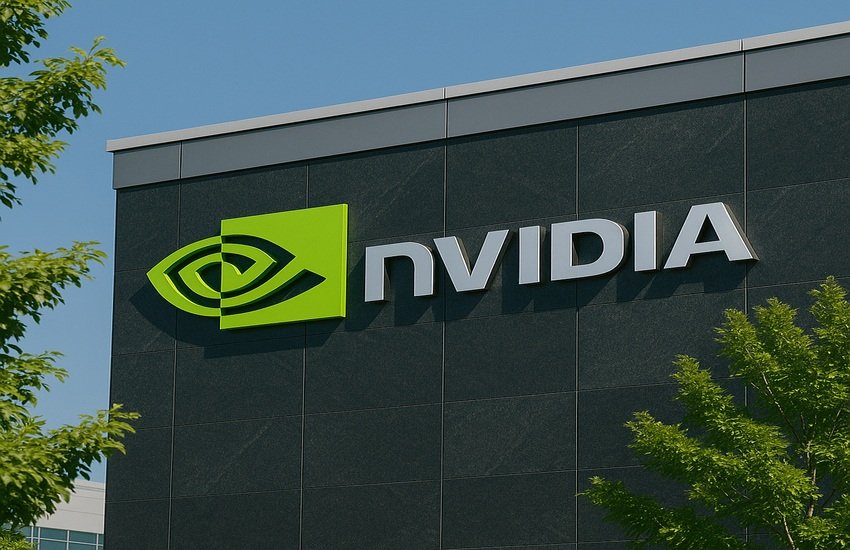The geopolitical tech battle between the U.S. and China has taken a sharp turn—and Nvidia is now squarely in the crosshairs. In a significant escalation, China’s State Administration for Market Regulation has launched an antitrust probe against Nvidia, claiming the chipmaker violated monopoly laws during its $7 billion acquisition of Israeli firm Mellanox Technologies. The regulator’s preliminary findings come at a delicate moment as U.S. and Chinese officials wrap up high-stakes trade talks in Madrid. Simultaneously, Chinese authorities have instructed domestic companies to halt purchases of Nvidia’s H20 chips and other AI hardware, further pressuring the firm’s China operations. Nvidia has responded by suspending H20 production and forecasts zero China revenue for the current quarter, implying a potential loss of up to $5 billion in sales. With China previously contributing $13.5 billion in trailing twelve-month revenue, this probe—and broader geopolitical tension—casts a long shadow over Nvidia’s prospects in its second-largest market.
Limited Market Reaction
Despite the gravity of the allegations and the magnitude of potential lost revenue, Nvidia’s stock has shown remarkable resilience. Shares even closed slightly up (0.2%) on the day of the announcement, indicating that investors remain focused on the company’s broader growth trajectory rather than short-term geopolitical headwinds. This muted reaction may be attributed to a few key reasons. First, investors have priced in geopolitical volatility with China as a persistent risk in the semiconductor space. Second, Nvidia’s diversified global revenue base and dominant position in AI infrastructure give it significant cushion. Its latest quarterly earnings beat expectations with $46.7 billion in total revenue, fueled by Blackwell and Hopper platform demand. Moreover, the company has resumed production at full speed, shipping roughly 1,000 GB300 racks per week, with additional capacity expected to come online in Q3. Meanwhile, China’s decision to target Nvidia during trade talks could be interpreted more as a political signal than a policy that will fully decouple its tech sector from Nvidia’s solutions. Market participants may also be weighing the possibility that this antitrust action is a tactical maneuver to extract concessions or secure more favorable chip licensing terms—rather than a prelude to a permanent ban. Nonetheless, while the stock may not have corrected sharply yet, that doesn’t eliminate the long-term risks this action introduces to Nvidia’s revenue predictability and geopolitical exposure.
Long-Term AI Demand Intact
The long-term demand for Nvidia’s AI infrastructure remains structurally robust despite near-term headwinds in China. CEO Jensen Huang reiterated during Nvidia’s latest earnings call that we are at the beginning of a $3 trillion to $4 trillion AI infrastructure build-out through the end of the decade. Nvidia’s full-stack dominance—from GPUs to networking to AI software—positions it as a cornerstone of global AI adoption. Key customers including OpenAI, Meta, Microsoft, Amazon Web Services, and Google Cloud are ramping adoption of its GB200 and GB300 systems at scale. The transition from Hopper to Blackwell GPUs has already yielded 10x improvements in energy efficiency per token, a metric critical in power-constrained data centers. NVIDIA has also advanced to the next product cycle with Rubin chips already in fab, targeting 2026 volume production. Additionally, sovereign AI initiatives in the EU, U.K., and other regions are offsetting exposure to China. For instance, the EU plans to invest €20 billion to build 20 AI factories, with five “gigafactories” alone expected to increase AI compute infrastructure tenfold. Nvidia projects over $20 billion in sovereign AI revenue this year—more than double from last year. Finally, demand across enterprise AI, physical robotics, and next-gen agentic AI systems suggests a secular upward trajectory. As long as power efficiency and compute density remain priorities, Nvidia’s architectural advantages—especially NVLink 72 and full CUDA-stack integration—are expected to remain compelling. Hence, the macro tailwinds for AI infrastructure remain intact even as China introduces localized disruptions.
Potential Diplomatic Resolution
While the antitrust action appears to be escalating, there remains a tangible possibility that diplomacy could defuse tensions. Notably, Beijing’s announcement of the Nvidia probe coincided with a framework agreement reached between the U.S. and China on TikTok. The synchronized timing suggests a strategic linkage between various tech-related issues, potentially indicating room for negotiation. Nvidia is actively working with U.S. authorities to gain approvals for its Blackwell platform in China and has reportedly resumed limited H20 shipments to non-restricted customers. The U.S. government has reviewed licenses for H20 sales and, while it hasn’t codified a formal revenue-sharing rule yet, it has floated a 15% revenue allocation to the U.S. Treasury from approved shipments. Nvidia has signaled willingness to comply and continues to engage regulators on both sides. This collaborative posture could keep the door open for eventual resolution. Furthermore, Nvidia’s role in supplying critical AI infrastructure globally—used not just by corporations but also sovereign entities—may grant it strategic leverage in diplomatic circles. The company has emphasized that its products are purely for commercial, not military, use, and that it adheres strictly to all export controls. If tensions ease, Nvidia could unlock between $2 billion and $5 billion in revenue from H20 shipments in Q3 alone. A normalization of trade relations or an updated export framework—possibly exempting certain chips for commercial use—could mitigate further revenue attrition. Nevertheless, the evolving regulatory landscape underscores the fragility of relying on geopolitical diplomacy to secure business continuity in sensitive markets like China.
China Revenue At Risk
The most immediate and quantifiable risk for Nvidia is the potential erosion of its China revenue base. In the past four quarters, China contributed $13.5 billion—about 12% of Nvidia’s global revenue—down from 21% in the previous year. However, for the current quarter, Nvidia has forecast zero revenue from China, citing the country’s directive to firms to halt purchases of its hardware. This guidance implies a hit of $2 billion to $5 billion in potential quarterly revenue. Compounding the issue is the apparent contradiction between Nvidia’s compliance with U.S. export controls—halting supply of its most advanced chips—and China’s assertion that such actions breach Nvidia’s previous commitments to ensure uninterrupted supply under the Mellanox acquisition terms. Beijing appears to be leveraging this perceived non-compliance to justify its antitrust probe. Regardless of the legal outcome, the commercial impact is real: halted shipments, suspended partnerships, and declining market share. While Nvidia has sold $650 million worth of H20 chips to non-China customers in Q2, those sales are insufficient to offset the lost momentum in its second-largest market. Chinese competitors like Huawei, Baidu, and Alibaba are accelerating internal chip development and substituting Nvidia’s offerings with domestic alternatives. China’s aggressive push for self-sufficiency in AI chips, backed by state funding and political will, poses a structural headwind to Nvidia’s long-term presence in the region. Even if the antitrust issue is resolved, the risk of permanent market share erosion in China remains high. This potential loss must be carefully weighed against Nvidia’s current and projected growth in other regions.
Key Takeaways
China’s antitrust investigation into Nvidia marks a pivotal moment for the chipmaker’s relationship with its second-largest market. While the company continues to lead globally in AI infrastructure—fueled by record-setting adoption of its Blackwell platform and soaring demand for agentic AI—its China revenue stream faces regulatory, political, and competitive headwinds. The potential for diplomatic resolution remains, and Nvidia’s diversification strategy across sovereign AI and hyperscaler build-outs provides a buffer. However, the long-term erosion of China market share—combined with the rise of domestic alternatives—could impact Nvidia’s global dominance over time. From a valuation standpoint, Nvidia remains priced at elevated levels. Its LTM EV/Revenue multiple stands at 25.87x and LTM EV/EBITDA at 43.5x, with an LTM P/E of 50.65x. These metrics suggest that much of Nvidia’s growth is already priced in, and any sustained disruption in China could challenge its current valuation premium. Investors must now weigh the company’s unmatched technical leadership against rising geopolitical uncertainty in a bifurcating tech world.





